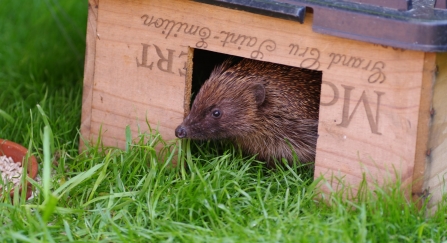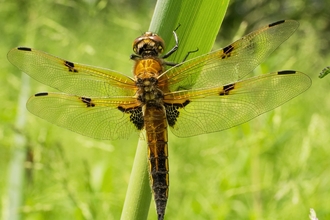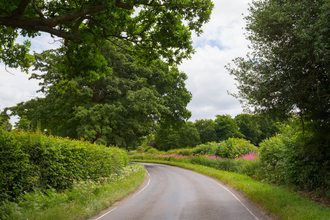As Britain’s only spiny mammal and almost unchanged for 15million years they are an unmistakable sight, but did you know they have a tail? They vary in size from 20-30cm and are covered in approximately 5000 spines, which are a creamy white colour fading to brown at the base. Their underside is covered in long coarse grey-brown fur which creates the illusion of a skirt along the edge of the hedgehog’s body, hiding its tail and surprisingly long legs.
As their name suggests their ideal habitat is a hedgerow. It provides dense cover for nesting, a larder of invertebrates to feed on, shelter from predators and a road system for them to travel around. Unfortunately, rural populations have seen a huge decline for a few reasons; wide-scale use of pesticides kills their food supply, larger farms make it difficult for them to travel and poor hedgerow management reduces available habitat. This has led to some heading for the bright city lights and in Birmingham and the Black Country their ‘EcoRecord’ status is actually frequent, particularly in the leafy suburbs, this is brilliant as a recent report found that numbers had declined by 30% in th elast 10 years in urban areas, more in country areas.
There is great potential for hedgehogs to thrive in the urban environment, utilising gardens and parks. Visit our HEDGEHOG HEROES page to see how you can help hedgehogs in your garden. They’ll help you in return by keeping pests at bay as they love to eat beetles, caterpillars and slugs and they can tackle up to 100 invertebrates a night!
The breeding season lasts from April till September with the majority of activity occurring in May and June when the nights are warmest. The hedgehog courtship ritual is tedious and can sometimes cause tempers to flare. The male will circle the female while she continuously declines his advances and makes pig-like snorting noises as they shuffle round in circles. The noisy antics attract other males who will do battle through head-butting. Once the female agrees to mating it is a cautious act to avoid getting poked by each other’s spines. The female adopts a special position with her body flat to the ground with her head in the air, this flattens the spikes so the male can mount her. However, after all this and even several mating’s many females do not become pregnant. To combat this they have a very promiscuous approach to mating.






